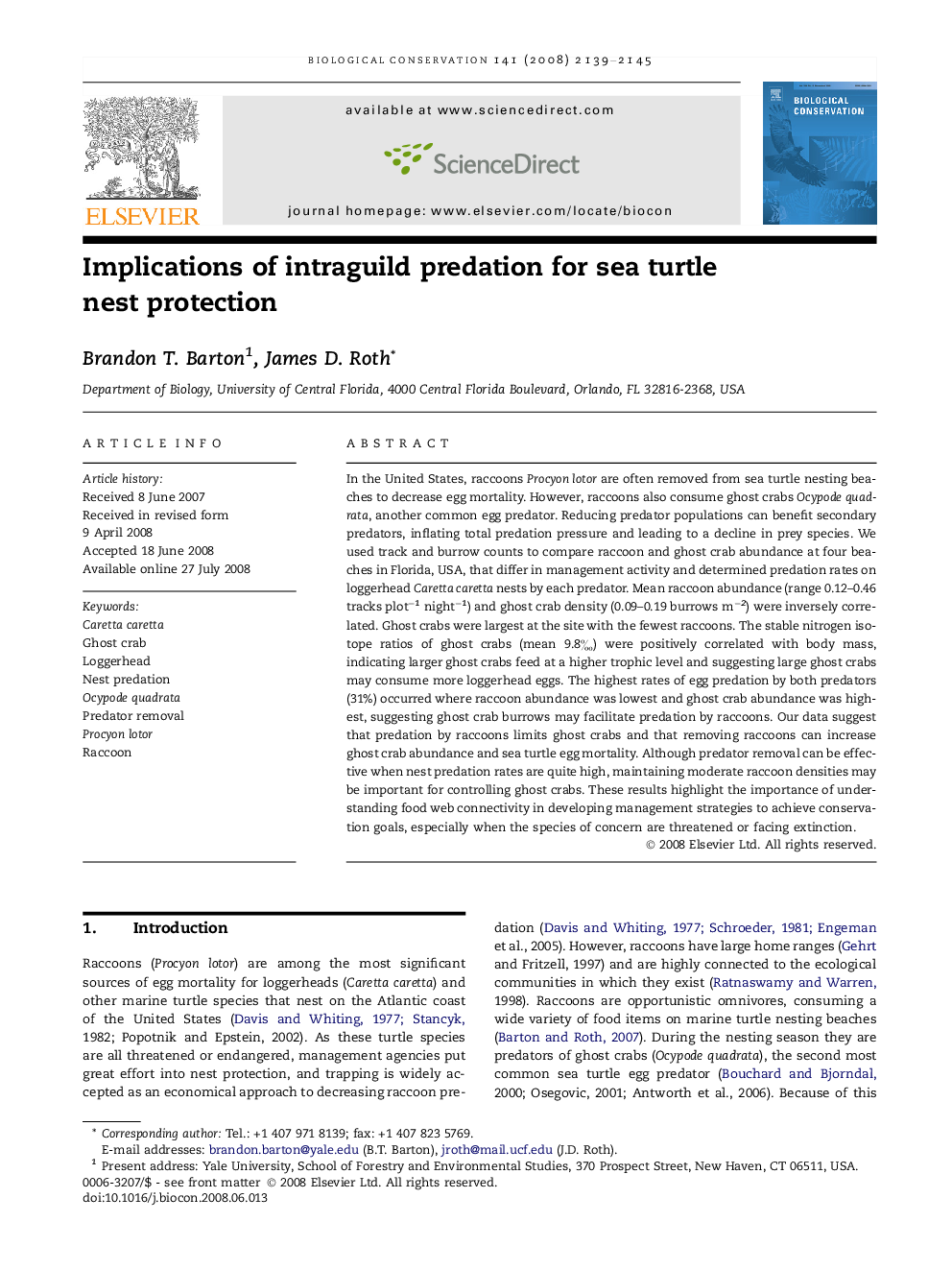| کد مقاله | کد نشریه | سال انتشار | مقاله انگلیسی | نسخه تمام متن |
|---|---|---|---|---|
| 4386795 | 1304578 | 2008 | 7 صفحه PDF | دانلود رایگان |

In the United States, raccoons Procyon lotor are often removed from sea turtle nesting beaches to decrease egg mortality. However, raccoons also consume ghost crabs Ocypode quadrata, another common egg predator. Reducing predator populations can benefit secondary predators, inflating total predation pressure and leading to a decline in prey species. We used track and burrow counts to compare raccoon and ghost crab abundance at four beaches in Florida, USA, that differ in management activity and determined predation rates on loggerhead Caretta caretta nests by each predator. Mean raccoon abundance (range 0.12–0.46 tracks plot−1 night−1) and ghost crab density (0.09–0.19 burrows m−2) were inversely correlated. Ghost crabs were largest at the site with the fewest raccoons. The stable nitrogen isotope ratios of ghost crabs (mean 9.8‰) were positively correlated with body mass, indicating larger ghost crabs feed at a higher trophic level and suggesting large ghost crabs may consume more loggerhead eggs. The highest rates of egg predation by both predators (31%) occurred where raccoon abundance was lowest and ghost crab abundance was highest, suggesting ghost crab burrows may facilitate predation by raccoons. Our data suggest that predation by raccoons limits ghost crabs and that removing raccoons can increase ghost crab abundance and sea turtle egg mortality. Although predator removal can be effective when nest predation rates are quite high, maintaining moderate raccoon densities may be important for controlling ghost crabs. These results highlight the importance of understanding food web connectivity in developing management strategies to achieve conservation goals, especially when the species of concern are threatened or facing extinction.
Journal: Biological Conservation - Volume 141, Issue 8, August 2008, Pages 2139–2145